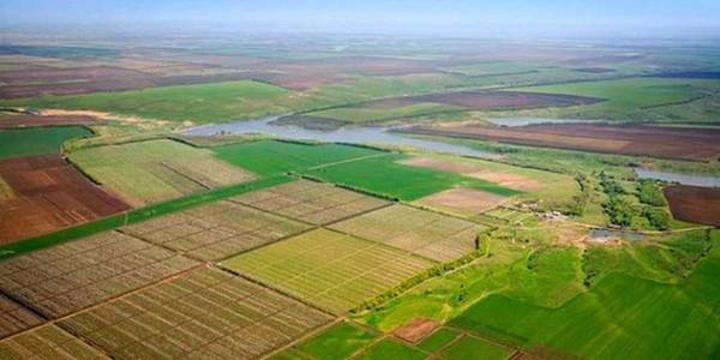Africa-Press – Namibia. Namibia Statistics Agency on Tuesday released ‘Namibia Prelminary Urban land Statistics Bulletin Vol. 1, Issue 1A,’ three years after releasing the first Land Statistics Booklet in September 2018. Statistician-General and CEO of NSA, Alex Shimuafeni said the main booklet was on agricultural (commercial) land nd government’s land reform programme and did not look at communal and urban land in detail, although it was the first step towards a deliberate effort to regularly publish land statistics generated through the NSDI.
Currently, Namibia can broadly be divided into three land classes of state land, communal and commercial agriculture land. State land can further be subdivided into broad classes of parks, restricted areas and urban land. Urban land is any proclaimed land that is held under the various local authorities and governed in accordance with the Local Authority Act, No. 23 of 1992 as amended.
Shimuafeni noted that in 2018, it was estimated that urban land, excluding the expanded city boundary of Windhoek, accounted for about 1% of the total land mass or 795,244 hectares. The country has experienced rapid urbanisation that has exerted pressure on the availability of urban land and services. The provision of land and basic services, inadequate housing, lack of land tenure security resulting in mushrooming of informal settlements, and inadequate basic urban infrastructure capacity are some of the challenges.
“Despite the above challenge, today I am releasing the first urban land statistics bulletin, volume 1, Issue 1A of December 2021. The Bulletin is divided into two parts and provides a summary of available urban zoned land in nine (9) out of the fourteen (14) regions of the country. The bulletin provides summaries of the number of serviced plots in all the proclaimed urban areas of the following regions: Erongo, Kunene, Omusati, Oshana, Oshikoto, Ohangwena, Kavango West, Kavango East and Zambezi. The emphasis of the publication is mainly on residential land while also accounting for other urban land uses. The bulletin also delivers a comparison of the size of zoned urban land as a proportion to the remaining townland in each urban locality,” he said.
In terms of town planning cadastral data, NSA could only manage to acquire data from the 9 regions between November 2020 and February 2021. The remaining 5 regions of Hardap, !Karas, Khomas, Omaheke and Otjozondjupa are expected to be covered during the window of November 2021 to February 2022 and therefore will be release as Volume 1, Issue 1B.
He added that land use changes continuously, thus the statistics provided in this bulletin are based on the harmonised digital town planning data acquired during the mentioned reference period.
In summary: A total urban land size of 370,452.9 hectares was evaluated as a sum of townland boundaries of 30 Local Authorities in the 9 regions. Erongo Region has the biggest urban land amounting to 183,793.4 hectares. Most of this urban land is covered by Walvis Bay at 111,156.2 hectares. The Kavango West Region has only one urban locality, Nkurenkuru and thus has the smallest urban land of 4912.2 hectares.
In terms of zoning status, Oshana Region has the most zoned or land use allocated land at 45.9% of its urban land already determined in terms of land uses. This is followed by Zambezi at 37.7% while Kunene and Oshikoto Regions have the least urban zoned land at 2.4% and 3.3% respectively.
A total of 192,261 plots covers a land size of 71,686.8 hectares of zoned urban land out of the 370,452.9 hectares representing only 19.4% of the total urban land in the 9 regions which is already allocated land uses or zoned. Most of the plots are in Erongo (51,570) followed by Oshana Region at 44,768 plots. Kavango West had the lowest number of plots at 6,281 followed by Kunene at 6,662.
NSA also conducted a comparison of Residential Zoned Plots to total Urban Zoned Plots by Region and found that Erongo Region has also more residential plots among the 9 regions at 42,758 plots out of a total of 51,570 urban plots being used for residential purposes. However, looking at residential plots to total plots by region, Kunene Region has classified more residential plots to total plots within the region at 91.5% followed by Zambezi Region at 91.4%.
“What this means is that there are more plots classified as residential compared to other land uses such as business, institutional use or open spaces,” he added.
NSA further exploded the regions to look at land use classifications within the urban localities. The number of zoned plots by urban locality is an indirect indication of the level of development of the local authorities. It was found that Rundu in Kavango East Region has more urban plots among the 9 regions at 25,157 followed by Oshakati at 18,126 while Bukalo has the lowest number of plots at 490 only. Okongo has more urban plots among village councils at 1,570.
In terms of the number of residential plots by urban locality, Rundu in Kavango East Region has the highest number at 22,293 residential plots followed by Oshakati at 16,486 plots. Helao Nafidi Town Council has the smallest number of residential plots at 209 plots followed by Bukalo Village Council.
With regard to zoning schemes, Omaruru, Divundu and Ondangwa are the top three most zoned urban localities, having more than three quarters of their land already zoned Tsumeb and Khorixas are the least planned or zoned urban localities having less than 1.5% of their townlands zoned. They are followed by Kamanjab at 1.7%, Outjo at 2.6% and Omuthiya at 4.6% respectively.
“The details of each assessed variable by region is in the report which will be available on our website immediately.”
To access the publications released today and others, visit www.nsa.org.na or download the statistical app onto your mobile phone to have all statistics at your fingertips.
For More News And Analysis About Namibia Follow Africa-Press






